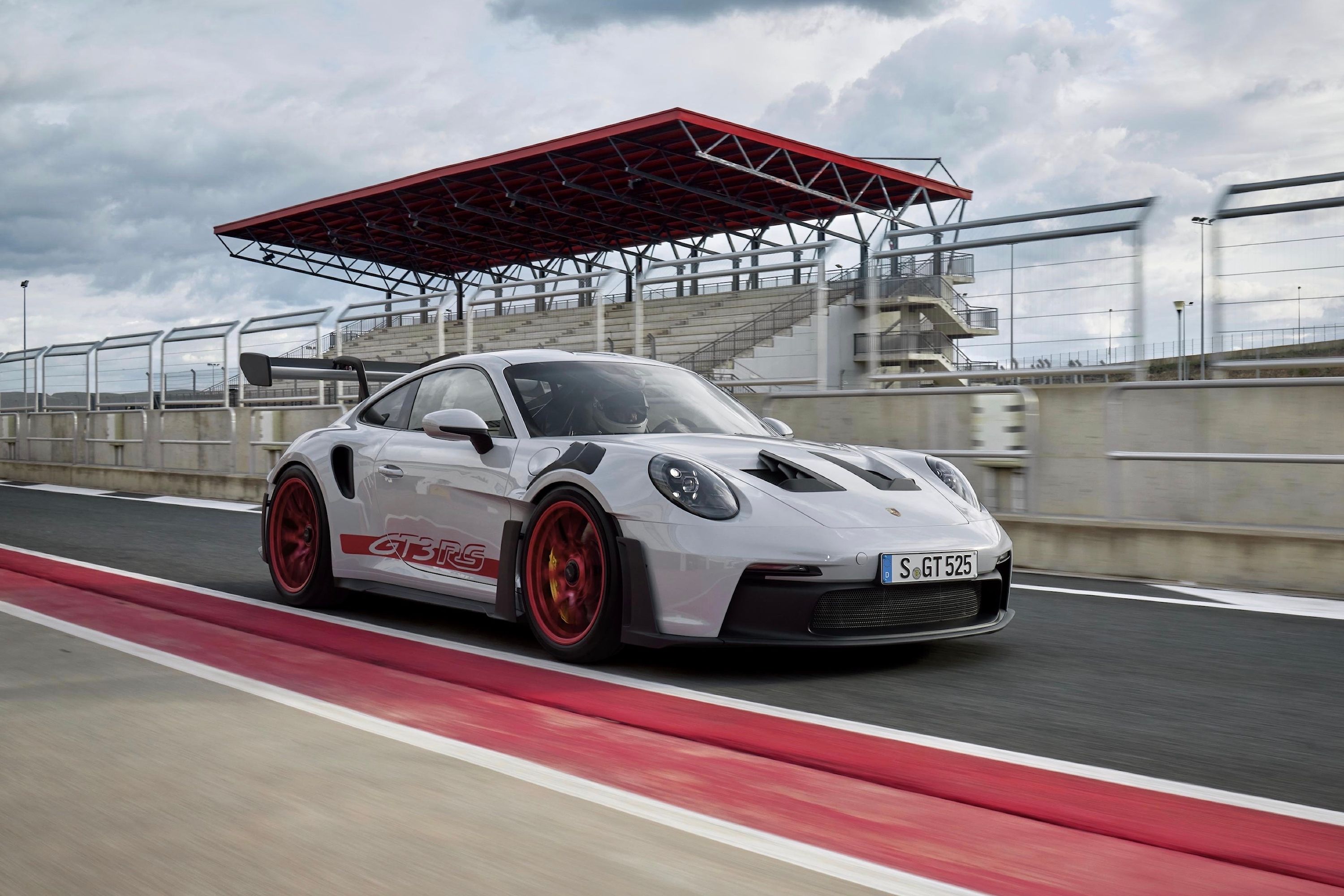
CarBuzz has uncovered a patent that Porsche has filed with the United States Patent and Trademark Office, apparently seeking to protect the ingenious active aerodynamic systems on the latest 992 911 GT3 RS. The German automaker had already filed a patent for the track special's hidden air guide elements and another for the DRS-style rear wing, but this new publication concerns another aspect of air manipulation that is pretty obvious, looking at the gargantuan aero appendages on the car: the way the front wing and the rear wing can be constantly adjusted to maintain maximum aerodynamic efficiency and optimal handling balance. As we learned when the GT3 RS was revealed, the front and rear wings are both controlled by electronic actuators, and their operation is not random.
Much fanfare has been made of the fact that the GT3 RS is capable of altering the angle of attack of each wing. The one at the front can be rotated by over 80 degrees, while the one at the rear can adjust its angle variably to either be completely closed and act as an airbrake or completely open to minimize wind resistance. Alternatively, the wing can find a spot somewhere between these two extremes to ensure optimal handling.
This is the part we're interested in today.
However much the rear wing is opened or closed, aerodynamic balance is always maintained at 30:70 front:rear, and Porsche's new patent explains how it arrived at its evaluation of how aerodynamic influence can be optimally exerted and when too much downforce can be a bad thing, as well as how to prevent disaster in such a scenario.
With so many infinitely adjustable elements critical to the balanced handling of the GT3 RS, the car needs to be ideally set up for any situation. To ensure that is possible, engineers first evaluated levels of downforce for the front axle and the rear. With this, Porsche could come up with a fairly accurate value for the Center of Pressure (CoP), through which the overall resultant downforce is predicted to act.
Then, experiments with various wing positions were undertaken, and once the automaker had discovered how the air would behave with certain respective downforce levels, it could find a range for optimal aero balance. Using sensors and algorithms, the car is able to continually adjust each end's specific downforce levels to ensure that the overall balance remains stable, offering reliable and repeatable handling characteristics, even as conditions change. Thanks to this, the car will not allow one aero element to be overadjusted and will prioritize overall balance above individual wing preferences.
But there's more to this patent that wasn't explicitly mentioned at the car's reveal.
As we know, the DRS-style rear wing can be fully opened by the driver using a button on the steering wheel, one of the coolest features of the GT3 RS. The RS also has a lower top speed (184 mph) compared to the regular GT3 (205 mph), thanks to that immense wing. At around 124 mph, the GT3 RS produces over 900 pounds of downforce
Now, in order to go as fast as possible, one needs to activate the so-called Drag Reduction System in the rear wing. But what if you're new to a track or the car and are chasing a top speed without the DRS enabled? Well, if the track is long enough (the Nurburgring springs to mind), you may place excessive loads on those tires and they could burst. To avoid a potential catastrophe, Porsche's system includes a warning telling the driver to either open the wing or slow down.
While there's little we didn't already know about how this works, Porsche has now ensured that the countless hours it spent in design, aerodynamic development, system optimization, and testing are not piggybacked off of by others.

